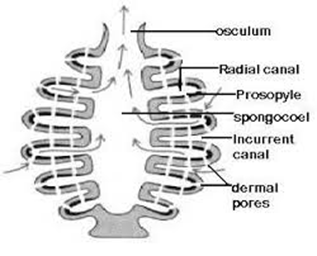Types of Eggs | Amount Of Yolk | Distribution Of Yolk
Types of Egg
Hello guys!
In this blog, we’ll explore a fascinating branch of zoology: the different types of eggs found in the animal kingdom. But before diving into the topic, let’s first understand what reproduction means.
Reproduction is a natural biological process through which parents produce offspring, typically of their own species. This process is essential for the survival and continuation of every species on Earth.
As we know, our planet is home to a vast range of species, each with its own unique way of producing eggs. Within these eggs lies the yolk — a rich source of nutrients. The yolk is made up of proteins, fats, vitamins, and minerals, all of which play a crucial role in the embryo’s growth and development.
Eggs are classified into different types based on the quantity of yolk they contain.
✨📚 Need Help with Notes or Assignments? 📚✨
Stuck with biology notes or struggling to finish your zoology assignment? Don’t worry — we’re here to help you learn better and score higher!
- 💡 Personalized, topic-wise notes
- 📝 Detailed assignment help
- ⏳ Fast and reliable support
l. On the basis of the amount of Yolk - Depending on the quantity of yolks, eggs can be
- Alecithal / Microlecithal / oligolecithal - The amount of yolk present in an organism's egg is of a very small amount or absent.
Example - Sea urchin, Amphioxus, Tunicates, Eutherian egg - Mesolecithal - In this type of egg, the yolk amount is medium or moderate & concentrated towards one pole of the egg.
Example - Amphibian, Dipnoi fishes, lungfishes, Petromyzon - Polylecithal / macrolecithal / megalecithal - The amount of yolk content is very large. Example - prototherian mammals, insects, annelids, reptiles
- Isolecithal / homolecithal Egg - The yolk is equally distributed in the whole egg.Since the amount of yolk is relatively small, these eggs undergo holoblastic cleavage, resulting in the formation of cells of similar size during early embryonic development.
Example - Alecithal , micro, oligolecithal egg. - Teloleithal Egg - Here the yolk is found on the one pole of the egg. Usually, the egg has two opposite poles, one is the animal pole and the other one is the vegetal pole. Telolecithal types of the egg are those in which yolk is present on the vegetal pole while the other pole is free.
Example - amphibian egg. - Centrolecithal Egg -
Centrolecithal eggs have a centrally located yolk, surrounded by a thin layer of cytoplasm and a large central nucleus. This type of egg is found in insects, such as flies and beetles. The yolk acts as a nutrient reserve for the developing embryo. Centrolecithal eggs undergo superficial cleavage, where cell division occurs only in the outermost layer of the cytoplasm, while the yolk remains intact.
3. On the Basis of Shell - on the basis of a shell, there are two types of eggs -

- Cleidoic Eggs - The egg is surrounded by a hard covering or shell. These types of eggs are generally seen in terrestrial animals.
- Non - Cleidoic Eggs - The egg which is not surrounded by any hard covering.
4. On the basis of the development of egg - There are two different sorts of eggs based on how they develop:

- Determinate /mosaic type - In some eggs, every part is already set with a specific role in the embryo's future development. If any part of the embryo is removed, the organism won’t develop properly. This is because each part is essential and can't be replaced or regenerated by the remaining sections. The missing portion cannot be recreated by the rest of the embryo. This kind of egg, where the fate of each part is already determined early on, is known as a determinate egg—it develops in a fixed, mosaic-like pattern.
- Indeterminate type - An indeterminate egg is a type of egg found in certain animals, particularly reptiles and birds. It is characterized by having a high degree of developmental flexibility, meaning that the fate of the embryo is not predetermined at the time of fertilization. In indeterminate eggs, the blastomeres—the cells resulting from cleavage—do not have a fixed developmental fate, and each cell has the potential to develop into a complete and functional organism on its own.




perfect & easy
ReplyDeleteVery easy to learn... Wow
ReplyDeletethank you
DeleteVery easy 😍 thank u
ReplyDeleteGood presentation
ReplyDeleteIn which class do you read ?
DeleteThe explanation is very nice and simple to understand. Thank u
ReplyDeleteIt's short and easy to learn,, ,thanks
ReplyDeletethank you
DeleteVery, very informative. This is a 10 star piece!
ReplyDeleteThank you
Deletethank you
ReplyDeleteEasier than ever
ReplyDelete